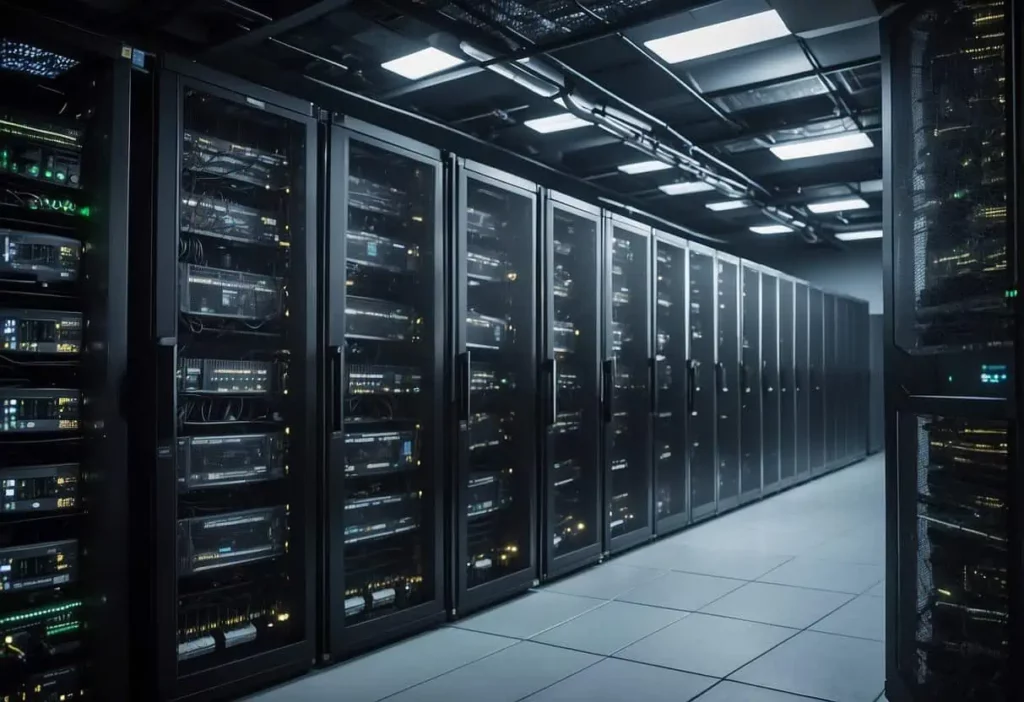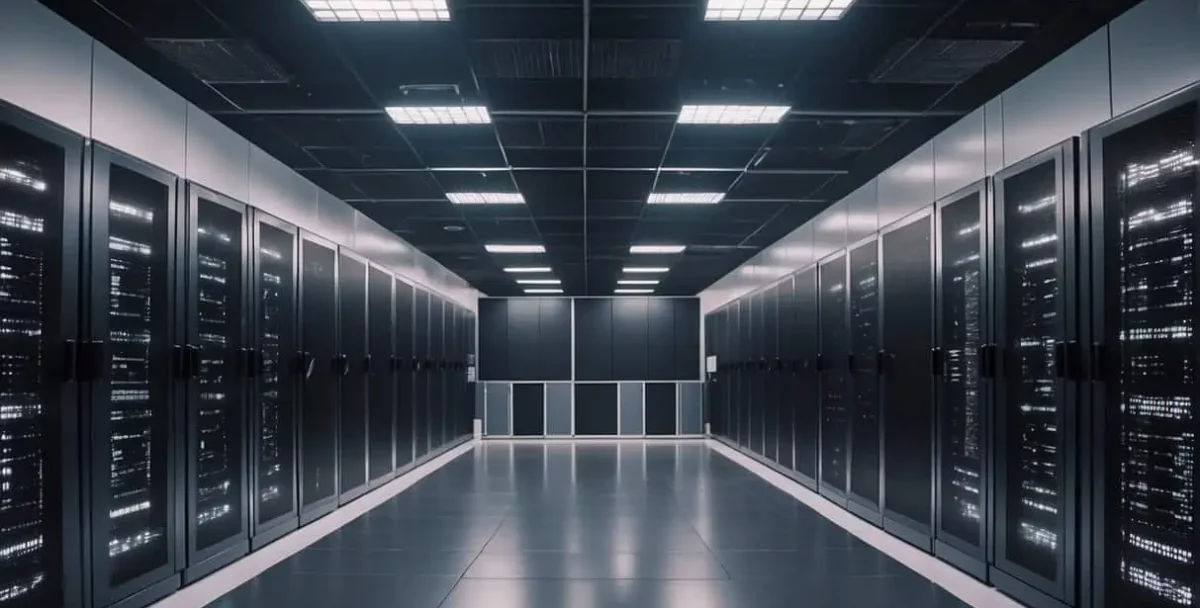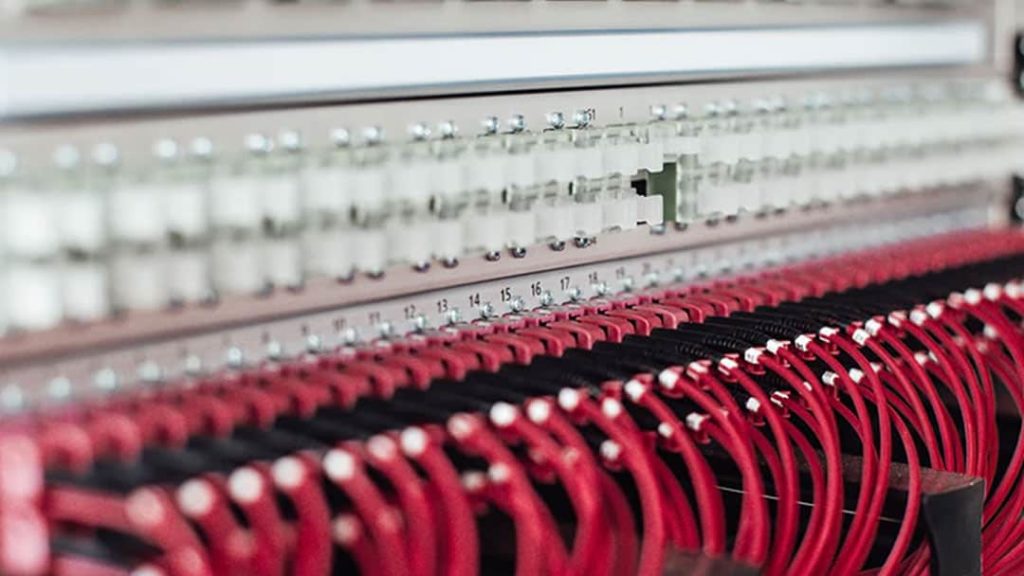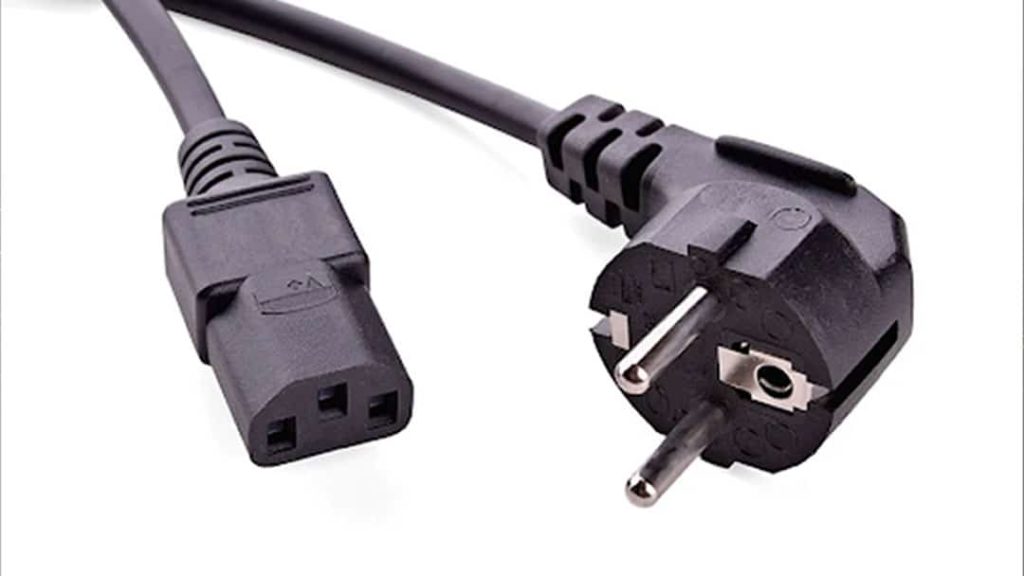Data centers have become ubiquitous as the backbone of the digital economy, storing, processing, and disseminating vast quantities of data. However, an often-overlooked byproduct of these technological behemoths is their noise output. The sounds emitted by data centers originate from a variety of sources including the hum of servers, the whirring of cooling fans, and the continuous operation of heating, ventilation, and air conditioning (HVAC) systems. This noise not only affects the well-being of the data center staff but also poses an environmental challenge as these facilities increasingly become neighbors to residential areas.
Facing the complexity of containing noise within and around data centers, the industry is continually evolving to find solutions that mitigate the impact on human health and comfort. These strategies include sophisticated architectural designs to absorb sound, advanced technological adaptations to equipment for quieter operation, and stringent noise regulations to protect the surrounding communities. As data centers continue to proliferate in response to the growing demand for digital services, managing acoustic outputs effectively has become an integral aspect of sustainable and socially responsible data center operation.
Key Takeaways
- Data centers contribute to noise pollution through various equipment operations.
- Noise control in data centers is important for staff well-being and community relations.
- Industry advancements aim at reducing noise impact through design and technology.
Understanding Data Center Noise

Data centers, crucial for housing critical IT infrastructure, generate significant noise due to their operational nature. The primary source of noise is from the myriad of servers, networking equipment, and cooling systems working together to maintain optimal conditions.
Noise Levels: Measured in decibels (dB), data center noise levels commonly reach upwards of 90 dB(A) near server areas. Within server racks, noise levels can climb even higher. For perspective, this continual hum is comparable to the noise produced by heavy traffic.
Noise Spectrum: Not only the level but the quality of noise is important. Data centers produce a range of sounds encompassing a broad spectrum. Low-frequency noise, which is less noticeable but can be insidious over time, contributes to the unique acoustic environment in these facilities.
Noise Pollution: Prolonged exposure to the ambient noise within data centers can contribute to noise pollution, which may affect the hearing health of employees. It also has the potential to disturb the surrounding community, warranting the implementation of mitigation strategies.
| Factor | Description | Impact |
|---|---|---|
| Server Operation | Constant running of equipment | High dB(A) levels, potential hearing risks |
| Cooling Systems | Essential to regulate temperature | Add to the cumulative noise output, often emitting low-frequency sounds |
| Physical Layout | Design and spacing of equipment | Can influence sound distribution and areas of concentrated noise |
| Building Design | Acoustic planning of facilities | Can help manage and mitigate inside and outside noise transmission |
Efforts to monitor and control data center noise include implementing sound-dampening materials and layouts designed to absorb sound. Moreover, regulations require periodic noise assessments to safeguard the workplace and external environment.
Sources of Data Center Noise

Data centers produce significant noise due to their operational activities, primarily stemming from various types of equipment and systems designed for processing, cooling, and power management.
Server and Equipment Noise
Servers and related equipment are primary contributors to data center noise. Each server within the racks generates sound due to mechanical hard drives, cooling fans, and vibrating components. Server racks densely packed with equipment can escalate the noise level because they contain multiple fans operating simultaneously.
Cooling System Noise
Cooling systems, specifically HVAC systems, produce considerable noise in data centers. This noise originates from cooling fans which maintain airflow to prevent overheating. The density of these cooling fans can affect the overall sound level, with greater numbers leading to higher decibel environments. Moreover, the heat exchanger units involved in the cooling process can also contribute to the ambient noise.
Ancillary Equipment Noise
Beyond servers and cooling systems, ancillary equipment like generators and UPS systems also add to the noise. They typically activate during power outages or fluctuations, emitting a humming sound along with typical operation noises.
Structural Noise Factors
The architecture of the data center can influence acoustics and noise levels. Structural components can either dampen or amplify sound waves, affecting how noise propagates both inside and outside the facility. Special design considerations are often needed to mitigate these effects.
Hybrid and Alternative Cooling Methods
Newer methods, such as hybrid cooling solutions or immersion cooling, seek to reduce noise pollution. Hybrid systems often combine traditional air cooling with more efficient techniques like liquid cooling, which can operate more quietly. Immersion cooling, involving servers submerged in a non-conductive liquid, can significantly decrease noise levels as it eliminates the need for multiple fans within server racks.
Impact on Humans

Data centers are integral to the digital economy, but their operational noise has identifiable impacts on humans ranging from health concerns to regulatory challenges and neighborhood disruptions.
Health Concerns from Noise Exposure
Data center noise can contribute to hearing loss, stress, and other health issues for individuals in close proximity. Prolonged exposure to high decibel levels, especially above 85 decibels, can lead to permanent auditory damage. Employees working within these facilities may experience increased stress levels, which can affect their overall health.
- Hearing Protection: Use of calibrated dosimetry to assess noise exposure and enforce hearing protection protocols.
- Training: Implementing comprehensive training for employees regarding noise risks and prevention strategies.
Workplace Noise Regulations and Compliance
Regulatory bodies such as OSHA stipulate clear guidelines for permissible noise exposure in the workplace. Data centers are required to maintain a safe auditory environment, employing measures like soundproofing and the use of innovative technology like Sensear to ensure regulatory compliance.
- OSHA Compliance: Regular assessments and adherence to the permissible exposure limits set by OSHA.
- Hearing Conservation Programs: Development and implementation of effective hearing conservation programs within the workplace.
Effects on Data Center Operators and Staff
The wellbeing of data center operators and staff is directly impacted by the noise levels they encounter daily. Maintaining low noise levels is crucial for their quality of life and job satisfaction. Proper hearing protection and routine hearing health checks are critical for employee safety and health.
- Quality of Life: Ensuring a quiet working environment to promote better focus and reduce stress.
- Health Monitoring: Continuous health monitoring and provision of healthcare support for employees affected by noise.
Noise Influence on Neighborhoods
Ambient noise from data centers can affect nearby neighborhoods, impacting the quality of life for residents. While not all noise levels are detrimental, the persistent hum or buzz from these facilities can be a source of annoyance, potentially leading to stress and sleep disturbances for the community.
- Community Engagement: Open dialogue with residents to address noise concerns and work on mitigation strategies.
- Noise Containment Measures: Investment in noise barriers and advanced infrastructure to minimize the noise escaping into surrounding areas.
Noise Reduction Techniques
Effective noise reduction in data centers is essential for maintaining a workable environment and prolonging hardware life. From soundproofing physical spaces to managing equipment noise and employing advanced cooling methods, there are several strategies to mitigate noise levels.
Soundproofing and Acoustic Treatment
Data centers can implement soundproofing measures to reduce ambient noise. One of the best practices includes the installation of acoustic foam on walls and ceilings, which absorbs sound waves, thereby dampening noise. Sound deadening mats and rubberized coatings are additional materials that can be used on floors and within server racks to lessen vibrations and airborne noise.
Equipment and Server Noise Management
Managing noise at its source is vital. Replacing standard fans with quieter models and optimizing fan speed according to thermal demand can significantly reduce sound levels generated by servers. Furthermore, configuring servers to run at necessary airflow levels, rather than the default high settings, contributes to noise mitigation by lessening the operational sound of cooling fans.
Innovative Cooling Solutions
Immersion cooling and liquid cooling are revolutionary approaches that remove the need for loud cooling fans in data centers. By immersing servers in non-conductive liquids or using direct-to-chip cooling plates, these methods not only cut down on noise but also improve heat dissipation efficiency.
Noise Damping with Material Science
The application of materials with noise-damping properties plays a critical role in quieting data centers. Foam lining within server cases and rubberized coatings on equipment surfaces can lessen the noise emitted by hardware. When combined with strategic room layouts and noise-reducing furniture placements, these materials can substantially lower overall noise levels.
Technological and Design Considerations
In addressing the noise challenges within data centers, technological advancements and design strategies play crucial roles. These adaptations not only mitigate sound but also enhance overall system efficiency.
Data Center Layout Optimization
Optimizing the layout of a data center is essential for managing acoustics alongside computing and storage efficiency. Key to this is the strategic placement of network switches and storage units to minimize noise. Reliability and energy consumption also come into play, influenced greatly by how a facility is arranged.
- Density: By organizing equipment with an eye toward optimizing airflow, the need for excessive cooling can be reduced, hence lowering the noise produced by cooling fans.
- Ancillary equipment: Positioning support hardware such as UPS (Uninterruptible Power Supplies) systems away from work areas can minimize disruptive noise.
Cooling Technology Enhancements
Advances in cooling technology have a significant impact on a data center’s acoustic environment. Cooling isn’t just vital for maintaining optimal performance of computing hardware; it’s also a primary source of mechanical noise.
- Cooling Equipment: Innovations in cooling fan design and the use of variable speed drives help maintain desired temperatures while minimizing energy consumption and noise level.
- Energy Efficiency: Systems with higher energy efficiency translate to less heat output and, consequently, a reduced reliance on aggressive cooling measures that generate noise.
Emerging Trends in Noise Reduction
The data center industry steadily adopts new trends to tackle noise pollution, focusing on both efficiency and sustainability.
- Underwater Data Centers: Some companies explore the feasibility of underwater data centers, which have the potential to leverage natural cooling properties of water bodies and reduce energy usage. Trend Benefit Underwater Deployment Natural cooling resulting in less noise. Soundproofing materials Advanced materials mitigate sound at the source.
- Sound-Absorbing Materials: Utilizing advanced materials within the data center’s infrastructure helps absorb sound directly around sources such as servers and cooling equipment, further contributing to noise reduction.
Managing Data Center Environment
Effective management of a data center environment hinges on controlling noise levels for employee safety and optimizing energy use for machine efficiency.
Monitoring Noise Levels
In order to safeguard the health and well-being of individuals working within data centers, it’s essential to implement sound monitoring strategies. Data center noise levels, often measured in decibels (dB(A)), can pose a significant risk of hearing damage over prolonged exposure. Dosimetry is a method used to assess the noise exposure levels employees face during their shifts. This process should involve:
- Baseline Sound Mapping: Utilizing sound level meters to chart noise levels across different areas within the facility.
- Regular Audits: Continuing evaluations to verify that noise abatement procedures remain effective.
Personal Protective Equipment for Employees
In environments where decibel levels consistently exceed safe thresholds, hearing protection is paramount. Data centers should provide:
- High-Quality Headphones or Earplugs: Equipment such as Sensear’s headphones that are designed to protect hearing.
- Comprehensive Training: Employees must be trained in the proper use and maintenance of their protective gear.
Energy Consumption and Noise Correlation
A data center’s environmental impact is often tied to its energy consumption, where excessive use correlates with noise, particularly from cooling equipment. Strategies for reducing noise and energy consumption include:
- Efficient Cooling Systems: Transitioning to liquid cooling reduces reliance on loud fans and HVAC systems.
- Smart Energy Use: Upgrading to energy-efficient servers that produce less heat, thus requiring less cooling.
Through rigorous noise monitoring, provision of protective equipment, and energy-smart operations, data centers can mitigate environmental and hearing risks while maintaining operational efficiency.
The Future of Data Center Acoustics
The field of data center acoustics is on the cusp of major technological advancements, stricter regulatory standards, and innovative design strategies. These changes aim to address the acoustic challenges data centers face today.
Advancements in Acoustic Technology
In the realm of acoustic technology, developments in soundproofing materials and noise reduction strategies are at the forefront. Research is channeling efforts into materials that can effectively dampen sound waves, leading to quieter and more sustainable data center environments. Hybrid approaches combining active and passive noise control are proving successful, incorporating smart systems that can adapt to changing acoustic conditions in real time.
Regulations and Standards Evolution
The evolution of regulations and standards is driving data centers towards obligatory regulatory compliance. Best practices are becoming more defined, with international standards setting clear guidelines on acceptable noise levels both inside and outside of data center facilities. Underwater data centers, a novel approach to reducing noise, also comply with unique standards due to their specific acoustic characteristics and environmental impact.
Innovations in Data Center Designs
Modern data center designs are revolutionizing the way facilities contend with acoustics. Moving beyond traditional construction, the industry sees an upswing in the use of modular and scalable solutions which incorporate the essentials of sound management into their design. The trend includes establishing zones of differing acoustic sensitivity and employing holistic design practices that integrate with the surrounding environment, leading to a more harmonious balance between functionality and noise control.
Frequently Asked Questions
Data centers are integral to our technology infrastructure but they can be a source of significant noise pollution. Understanding the nature and impact of this noise is essential for the health and well-being of those who work in data centers and live nearby.
What are typical noise levels in and around data centers?
In a data center, noise levels can reach up to 96 dB(A) near servers and other equipment, potentially causing hearing loss over long periods of exposure. This level is akin to the sound of a lawnmower or motorcycle.
What measures are taken to mitigate noise pollution from data centers?
Data centers often implement noise mitigation strategies such as acoustic barriers, sound-absorbing materials, and strategic placement of loud equipment. Additionally, creating sound maps to manage noise distribution within the facility is a common practice.
How does living in close proximity to a data center impact residents?
Residents living near data centers may experience continuous noise, often from HVAC systems or generators, which can be disruptive to daily life and may affect property values due to the potential for noise pollution.
Can the noise from data centers pose health risks?
Continuous exposure to the high noise levels typically produced by data center equipment can pose health risks, including stress, sleep disturbances, and hearing loss for unprotected individuals over time.
What are common sounds produced by data centers’ equipment?
Common sounds within a data center include the high-frequency whirring of server fans, the hum of HVAC units, the occasional clanking of mechanical hard drives, and the sustained drone from power supply units.
What distance is considered safe when it comes to noise from data centers?
The safe distance from a data center to minimize noise impact could vary, but as a rule of thumb, greater distances reduce noise exposure. Local regulations often define specific thresholds and acceptable distance ranges.
Last Updated on February 12, 2024 by Josh Mahan




